Immersive Experience and Virtual Reality | Fall 2017 - Fall 2018
In this story, we share how Brendan and Magdalena Balcerak Jackson, Assistant Professors in Philosophy, dedicated time and resources to experiment and implement the use of immersive reality technologies within their undergraduate and graduate courses. We discuss how virtual reality (VR) technologies helped enrich the philosophy curriculum in two existing courses and spurred the creation of a new first year seminar titled 'Immersive Experience and Virtual Reality.' This case study outlines not only the pedagogical and logistical implications of implementing VR assignments and activities, but also recommendations for the wider academic community.
Read More >>
Barbara Barrett (Intensive English Program, Division of Continuing and International Education)
 Student Stories with Adobe Spark Video | Spring 2017
Student Stories with Adobe Spark Video | Spring 2017
After participating in the Narrative Techniques Study, Barbara Barrett M.S.Ed., a lecturer in the Intensive English Program, transformed a traditional, formative presentation assignment in her course, 'Level 4 Oral Communication' (IEP142) into a student generated media assignment. Through developing and sharing personal narratives using Adobe Spark Video, ESL students had the opportunity to explore, correct their errors and receive valuable feedback to prepare for a high-stakes academic speech.
Read More >>
Elton Skendaj (Political Science, College of Arts and Sciences)
 Nonviolent Course Portfolio | Fall 2016
Nonviolent Course Portfolio | Fall 2016
In this course, an essay assignment is reformed to a digital mixed media assignment and posted to a course website. Students map the chronological events and key data relating to a nonviolent movement through a timeline or infographic to be shared on a course portfolio using Weebly.
Read More >>
Imelda Moise (Geography and Regional Studies, College of Arts and Sciences)
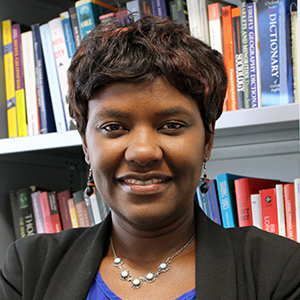 Reflective Blogging | Spring 2016
Reflective Blogging | Spring 2016
This faculty success story shares the use of a course blogging platform, within the undergraduate course, 'Immigrant & Refugee Health,' taught by Dr. Imelda Moise. Leveraging WordPress.com as single course blog, students became authors and used the medium to actively analyse, sythesize and post on current events on immigrant or health issues.
Read More >>
Jeffrey Weinstock (Marketing, School of Business Administration)
 Blackboard Collaborate | Fall 2015
Blackboard Collaborate | Fall 2015
Professor Jeffrey Weinstock (School of Business Administration) recently received the “Excellence in Teaching Award” for his work in implementing BUS 651, a graduate level course in the Executive MBA for the Americas Program. Professor Weinstock found that this class was transformed into an intimate group of collaborative students, but it didn’t start that way.
Read More >>
Katherine Komis (English Composition, College of Arts and Sciences)
 Cloud-Based Student Generated Media | Fall 2015
Cloud-Based Student Generated Media | Fall 2015
Last Fall Professor Katherine Komis (English Department) asked her English Composition students to be innovative. She asked them to develop a presentation but use alternative software (something other than PowerPoint). While PowerPoint is often useful, it is not as flexible as some of the newer presentation tools.
Read More >>
Alberto Cairo (Journalism and Media Management, School of Communication)
 Infographics and Data Visualization | Fall 2015
Infographics and Data Visualization | Fall 2015
Professionals from all over the campus are beginning to take the course and use Infographics and Data Visualization. As Cairo describes it, Infographics and Data Visualization are evidence-based driven communications with the goal of improving people’s lives. This technical solution is something he hopes that more faculty will begin to incorporate into their materials.
Read More >>
Chris Langdon (Marine Biology and Ecology, Rosenstiel School of Marine and Atmospheric Science)
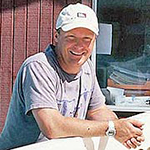 Swivl | Fall 2015
Swivl | Fall 2015
Many UM faculty use video to “flip the classroom.” The idea behind this innovative teaching technique is that they post recorded lectures online for their students to watch in advance. Then students come prepared for class ready to discuss the topic at a higher level.
Read More >>
Howard Gitlow (Management Science, School of Business Administration)
 VMWare Horizon | Fall 2015
VMWare Horizon | Fall 2015
This case study examines why Instructional Objectives are developed as the first step in the instructional design process, rather than jumping directly to instructional solutions. The main idea is that objective-based instruction leads to, or provides a path toward the the instructor’s needs.
Read More >>
Melissa Burley (Creative Writing, College of Arts and Sciences)
 Google Drive | Spring 2015
Google Drive | Spring 2015
This case study examines how the implementation of Google Documents will enable students to possess a greater creative, critical, and aesthetic understanding of the discipline. Using google documents and a web2.0 publishing tool student were given the ability to create a collaborative publication of their semesters artifacts from specific assignments.
Read More >>
Judy Hood (English Composition, College of Arts and Sciences)
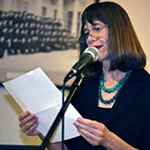 FLC Cohort | Fall 2014 & Spring 2015
FLC Cohort | Fall 2014 & Spring 2015
The FLC better known as Faculty Learning Community currently focuses on the topic of Information and Communication Technology (ICT) Literacy. The goal of the FLC cohort is to effectively give faculty members the knowledge, skills, and pedagogical support to improve their teaching and enhance the learning environment at the University.
Read More >>
Joanna Johnson (English Composition, College of Arts and Sciences)
 Multimodal Projects | Spring 2015
Multimodal Projects | Spring 2015
This case study examines how assigning a multimodal assignment within a course assists in targeting specific strategies for improvement all the while integrating collaborative peer reviews. Moreover, providing a learning environment which promotes and values critical thinking, synthesis and takes into account consideration of multiple perspectives.
Read More >>
John Funchion (English, College of Arts and Sciences)
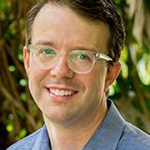 Google Drive | Spring 2015
Google Drive | Spring 2015
This case study examines how using Google Drive in the classroom provides opportunities to organize, analysis, and collaboration of student coursework in a way which utilizes both reflection and group work in a higher educational environment.
Read More >>
Robert Kirsner (Dermatology, Miller School of Medicine)
 Blended Learning | Fall 2014
Blended Learning | Fall 2014
This case study examines the purpose, execution, and and results of the Miller Schools of Medicines’ Dermatology course redesign. This redesign employed a “blended strategy” where students were provided content online through Blackboard via Softchalk learning modules using Kahn-style videos.
Read More >>
Vendulka Kubálková (International Studies, College of Arts and Sciences)
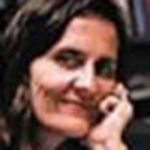 ePortfolios | Fall 2014
ePortfolios | Fall 2014
This case study examines how using ePortfolios in the classroom provides opportunities to design, create, and deliver student coursework in a way which utilizes active learning and engagement in a higher educational environment.
Read More >>
Greta Mitzova-Vladinova (Nurse Anesthesia, School of Nursing and Health Studies)
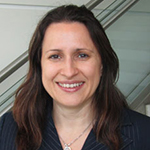 BB Collaborate | Summer 2014
BB Collaborate | Summer 2014
This case study examines how BlackBoard Collaborate was used to record student presentations for creating a course library, which was utilized in individualized student teaching. The recordings evolved into a strategy for feedback and improvement in performance.
Read More >>
Yunqiu (Daniel) Wang (Biology, College of Arts and Sciences)

Flipped Learning | Spring 2014
This case study examines how using the flipped learning classroom model provides opportunities to design, create and deliver courses which use active learning and engagement strategies to facilitate students’ teamwork, problem solving and critical thinking skills in a higher educational environment.
Read More >>



 Student Stories with Adobe Spark Video | Spring 2017
Student Stories with Adobe Spark Video | Spring 2017 Nonviolent Course Portfolio | Fall 2016
Nonviolent Course Portfolio | Fall 2016 Reflective Blogging | Spring 2016
Reflective Blogging | Spring 2016 Blackboard Collaborate | Fall 2015
Blackboard Collaborate | Fall 2015 Cloud-Based Student Generated Media | Fall 2015
Cloud-Based Student Generated Media | Fall 2015 Infographics and Data Visualization | Fall 2015
Infographics and Data Visualization | Fall 2015 Swivl | Fall 2015
Swivl | Fall 2015 VMWare Horizon | Fall 2015
VMWare Horizon | Fall 2015 Google Drive | Spring 2015
Google Drive | Spring 2015 FLC Cohort | Fall 2014 & Spring 2015
FLC Cohort | Fall 2014 & Spring 2015 Multimodal Projects | Spring 2015
Multimodal Projects | Spring 2015 Google Drive | Spring 2015
Google Drive | Spring 2015 Blended Learning | Fall 2014
Blended Learning | Fall 2014 ePortfolios | Fall 2014
ePortfolios | Fall 2014 BB Collaborate | Summer 2014
BB Collaborate | Summer 2014
